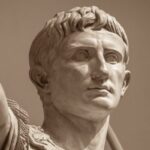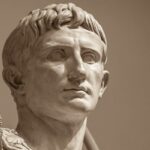We explain what the Roman Empire was, its location, stages and other characteristics. Also, the Roman emperors.
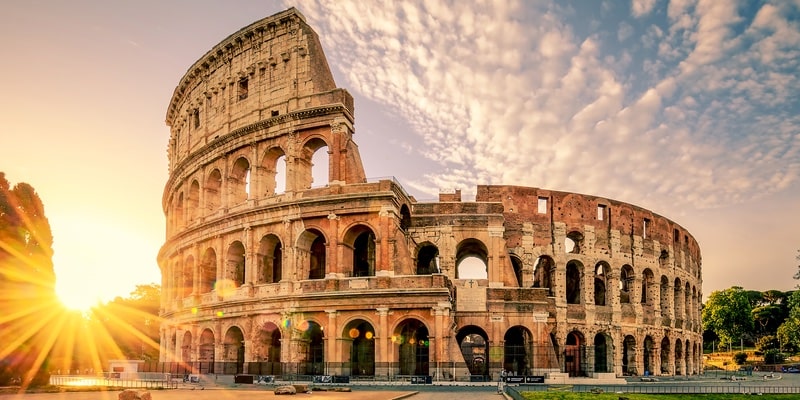
What was the Roman Empire?
The Roman Empire (Imperium romanum in Latin, which translates as “Roman dominion”) was the period of maximum expansion of the Roman State in Classical Antiquity. It was an autocratic political regime that It existed between the years 27 BC. C and 476 AD. c and dominated over the entire Mediterranean and even in some regions beyond.
The Roman Empire was one of the most important political entities of ancient times, especially in the West. Together with the preceding period, known as the Roman Republic, it laid the foundations for many aspects of the contemporary Western world and left a significant political, judicial, cultural and social legacy.
The greatest expansion of the Roman Empire was reached in 117 AD. c In the 3rd and 4th centuries it experienced a political and territorial division, first during the reign of Diocletian (284-305) and then after the death of Theodosius I (379-395), when the division between the Western Roman Empire and the Roman Empire was consolidated. the Eastern Roman Empire, the latter later known as the Byzantine Empire.
The Western Roman Empire fell in 476 due to the economic weakening and the pressure of the so-called barbarian peoples, while The Eastern Roman Empire lasted until 1453.
In general, life in the Roman Empire was cosmopolitan. Roman culture was strongly influenced by Greek culture (from which it largely inherited philosophy and mythology) and also adopted cultural aspects from other conquered territories. However, the Romans also imposed their language (Latin) and some customs (such as urban life) and granted Roman citizenship in their provinces a process known as “romanization.”
The Roman Empire was the scene of the emergence and massification of Christianity, a cult that became the official religion of the empire in the 4th century. The importance of the Roman Empire was so great that after its fall there were some attempts to reestablish it, such as the Carolingian Empire (of Charlemagne) and the Holy Roman Empire.
Beginnings of the Roman Empire

When Rome was still a Republic, the consul Julius Caesar (100-44 BC) was assassinated by a group of conspirators who saw him as a tyrant in the making. After his death, a civil war broke out for political control of the Republic.
The victory went to the side of Octavian (63 BC-AD 14), Mark Antony and Marcus Aemilius Lepidus, who established a type of dictatorship known as the Second Triumvirate. Later, Octavian (Julius Caesar's great-nephew) confronted the other two triumvirs. He managed to exile Lepidus and defeated Mark Antony in the naval battle of Actium in 31 BC. c.
So Octavio presented himself as defender of the Republic and returned some of its powers to the Senate with the intention of legitimizing its political position. He got the Senate to appoint him Augustus a new title that meant “venerable” and that identified him as an emperor. In this way, he personally concentrated political power. Thus the republican life of Rome ended and the Roman Empire formally began in 27 BC. c.
The importance of the first Roman emperor was such that his successors used the names Caesar (which Octavian had adopted after the death of his great-uncle Julius Caesar) and Augustus as royal names.
The sixth month of the Julian calendar that was used at that time, called sextillis, was renamed Augustus, from where it arrived in the Gregorian calendar as the eighth month (August).
Location of the Roman Empire

The Roman Empire was centered in Italy and, more specifically, in the city of Rome which was its capital. Its conquests in other territories began during the times of the Republic and expanded during the years of the empire.
Rome's main political and economic interests were always oriented to the Mediterranean Sea, which connected Europe with North Africa and the Middle East. With the aim of controlling the Mediterranean basin and some regions beyond, the empire expanded to reach an area of approximately five million square kilometers.
Although the extent of the Roman Empire changed greatly over time, at its peak it included:
- Almost all of Western Europe
- The Balkans
- The shores of the Black Sea
- Almost all of present-day Türkiye, Syria and Cyprus
- The southern Levant (present-day Jordan, Palestine, Israel and Lebanon)
- North Africa (from Egypt to Morocco)
Such a territory was difficult to navigate and administer and required to be divided into provinces which in the years of greatest extension of the empire were 46 (117 AD) but through subdivisions ended up being 96 (285 AD). Many of the names of these provinces gave rise to the current names of countries and regions, such as Britannia, Germania, Hispania or Iudaea. A large network of roads was also built to facilitate communication and transportation.
Characteristics of the Roman Empire
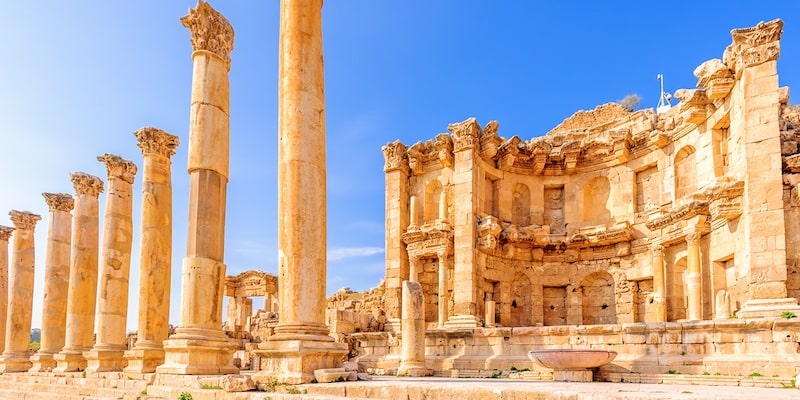
The Roman Empire had the following characteristics:
- It emerged in 27 BC. C., when Augustus became the first emperor of Rome and ended the era of the Roman Republic, and lasted according to some historians until the fall of the Western Roman Empire in 476, and according to others until the fall of the Eastern Roman Empire in 1453.
- Its extension was very large, covering a good part of Europe, North Africa and Western Asia which implied complete control of the Mediterranean Sea. Its territory was divided into provinces, each administered by a high imperial official.
- Much of Roman culture was influenced by Greek culture to the point that they shared philosophical principles, values and much of the same polytheistic religion. For example, the Greek gods and heroes were renamed by the Romans in their own mythology: Zeus as Jupiter, Aphrodite as Venus, Hermes as Mercury, Hera as Juno, Hephaestus as Vulcan, Poseidon as Neptune, Odysseus as Ulysses, Heracles as Hercules, inter alia.
- He witnessed the birth of Christianity a religion that emerged from Judaism that spread from Judea. The influence of this new cult on the population of the empire was such that, starting in the 4th century, it became the official religion of the Roman Empire and spread throughout Europe.
- The capital was most of the time Rome but at different times he moved to Milan, Ravenna, Nicomedia and Constantinople.
- He had a powerful army organized in legions (up to 30 in its best moments), each composed of 10 cohorts, equipped with a banner each, divided in turn into five or six centuries of eighty soldiers each. Each century could be subdivided into ten contuberniums, which was the minimum unit of 8 legionaries who shared their tent. Each legion had between five thousand and six thousand infantry soldiers.
- It was a vast empire colonial in Rome there was a plurality of products from different regions, multiple languages were spoken and there was an extensive trade network thanks to the road system that allowed the connection of the different Roman provinces. In addition, coins were minted that facilitated economic relations within the empire, such as the denarius, the sestertius and the solid.
Stages of the Roman Empire
The history of the Roman Empire is usually divided into two stages or periods:
The High Empire (27 BC to 284 AD)
The High Empire was the period of rise of the Roman Empire, in which its territorial expansion and most of its military conquests took place, led by four ruling dynasties: the Julio-Claudian dynasty, the Flavian dynasty, the Antonine dynasty and the Severa dynasty.
It started with the Roman pax of Augustus and ended with the so-called crisis of the third century that led to the rise of Diocletian.
The Late Empire (284 AD to 476 AD)
The Lower Empire was the stage of political and economic decline of the empire that began after the governance crisis generated by the assassination of Emperor Alexander Severus in 235, followed by the assassination of several emperors until the year 285.
After Diocletian came to power, the idea of separately administering the western and eastern halves of the empire appeared for the first time which was consolidated after the death of Theodosius I (395), who gave each half to one of his sons. However, no restructuring managed to return splendor and peace to the empire.
Roman architecture

One of the great legacies of Roman culture was its architecture, which He imitated styles of classical Greek culture but added his own elements and original. Roman architecture began to stand out during the Republic but had its moment of splendor during the empire.
During this time, great engineering works were carried out, such as the famous aqueducts, triumphal arches and Roman coliseums that still exist, the public baths underfloor heating or the great religious temples that Christianity later inherited.
Most of the current Roman ruins date from the High Empire. This style peculiar to the Romans was the standard in the West until the 4th century, when Byzantine architecture emerged, and then reappeared as one of the influences on Romanesque architecture in Western Europe in the 10th century.
Roman economy
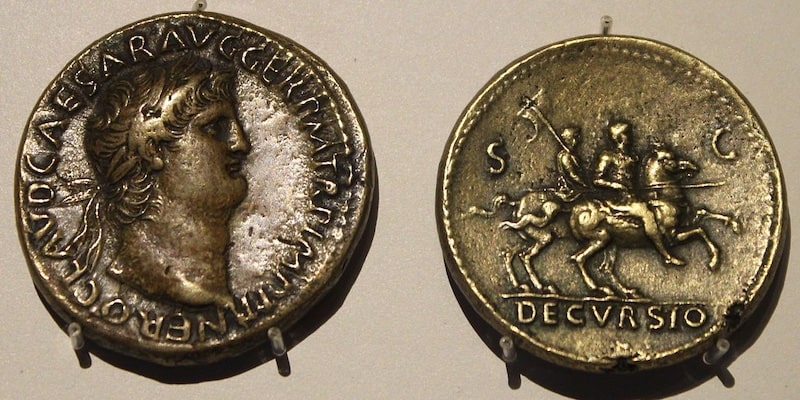
The economy of the Roman Empire was of the slave type, since allocated slave labor to the agricultural production and other tasks, with no more remuneration than that necessary for their maintenance.
Slaves were considered the property of their masters and could be sold, bought or freed. There were also free workers and settlers (the latter could cultivate land in exchange for a payment to the owner of the land).
Social life and commerce were centered in large cities, interconnected by a wide network of roads, which also allowed the movement of troops. The provinces of the empire were obliged to pay tribute.
The Romans developed agriculture and cattle raising with the introduction of new techniques and the production of very diverse crops, given that the extension of the empire allowed the exploitation of different types of soils, climates and resources. The most important crops were vines, wheat, barley and olive trees (from which they obtained oil that was transported in amphorae), as well as other fruit trees, cereals, vegetables and legumes.
Roman law
Another of the legacies of the Roman Empire to the West was its legal and legislative system, on which many of the current codes of justice are inspired. The so-called “Roman law” (Ius romanum) formed the basis of right modern and still survives in the form of fundamental principles and sentences often presented in the Roman language, Latin.
Roman law was complex, practical and of technical quality. Although older, it was first compiled by Justinian I, emperor of the Eastern Roman Empire, in the 6th century in a compilation called Corpus iuris civilis.
In general terms established a division between private law and the public law depending on whether the matter had to do with the relationship between individuals or with the relationship between the State and citizens. In addition, it contemplated specific branches such as criminal law, tax law and administrative law.
Fall of the Roman Empire
The fall of the Western Roman Empire occurred in the year 476 when a general of the Germanic tribe of the Heruli, Odoacer, deposed Romulus Augustulus, the last Western Roman emperor.
This occurred within the framework of a series of migrations and invasions of barbarian populations, as the Romans called the peoples who had not assimilated the Roman culture and language, in this case the Germanic tribes of northern, central and eastern Europe.
The barbarians, pushed by the invasions of the Huns, had to enter Roman territory en masse and found it poorly defended and in a state of disorder. These people settled in each of the Roman provinces and founded new independent kingdoms there. The fall of the Western Roman Empire put an end to Ancient Age and inaugurated the Middle Ages.
The Eastern Roman Empire survived these events, and for almost a thousand years continued to defend its status as a Roman Empire (although historians called it the Byzantine Empire) and preserve its Greek heritage and Orthodox Christianity.
From 395 to 1453 its territory changed enormously, with an expansion towards the west that then led it to gradually lose territory, until its capital, Byzantium (then called Constantinople), fell to the Ottoman Empire in 1453.
The Ottoman authorities founded Istanbul in its place and put an end to the Byzantine Empire, the last vestige of the Roman Empire.
List of Roman emperors
The Roman Empire had different dynasties of emperors, of which four were the most recognized:
Julio-Claudian Dynasty. It was composed of the descendants of Julius Caesar and Augustus, it had emperors who consolidated imperial power and carried out countless public works, although some of them were portrayed as despotic and eccentric:
- Augustus, from 27 BC. C. to 14 d. c
- Tiberius, from 14 to 37
- Caligula, from 37 to 41
- Claudio, from 41 to 54
- Nero, from 54 to 68
Flavian Dynasty. It was inaugurated by Vespasian after a brief civil conflict, it was characterized by its efficient administration, its public works and by granting Roman citizenship to many inhabitants of the cities of the provinces of the empire:
- Vespasian, from 69 to 79
- Tito, from 79 to 81
- Domitian, from 81 to 96
Antonine Dynasty. It was made up of six emperors, the first five known as “the five good emperors”, as they stood out for their correct political and social administration and because during their reign the empire reached its maximum territorial extension:
- Nerva, from 96 to 98
- Trajan, from 98 to 117
- Hadrian, from 117 to 138
- Antoninus Pius, from 138 to 161
- Marcus Aurelius, from 161 to 180
- Comfortable, from 180 to 192
Severe Dynasty. It was the last dynasty before the crisis of the 3rd century, and had governments with a strong influence of the women of the family, such as Julia Domna, Julia Mesa, Julia Soemias and Julia Mamea. He also promulgated the edict of Caracalla that granted Roman citizenship to all free men of the empire:
- Septimius Severus, from 193 to 211
- Caracalla, from 211 to 217
- Geta (with Caracalla), from 211 to 212
- Macrinus, from 217 to 218
- Elagabalus, from 218 to 222
- Alejandro Severo, from 222 to 235
After these four dynasties, other emperors followed one another, who are usually grouped into different stages:
Emperors of the crisis of the 3rd century. They were those who succeeded each other after the assassination of Alexander Severus. Many of these emperors were also murdered. Several had to deal with usurpers to the throne. The first phase is usually known as military anarchy:
- Maximinus the Thracian, from 235 to 238
- Gordian I and Gordian II, during 238
- Pupienus and Balbinus, during 238
- Gordian III, from 238 to 244
- Philip the Arab, from 244 to 249
- Decius, from 249 to 251
- Etruscan Herenius (along with Decius), during 251
- Treboniano Gaul, from 251 to 253
- Hostilianus (along with Trebonianus Gallus), during 251
- Volusianus (along with Trebonian Gallus), from 251 to 253
- Emiliano, during 253
- Valerian, from 253 to 260
- Gallienus, from 260 to 268
The Illyrian emperors. Mostly coming from Illyria, a late-Romanized Balkan province and whose soldiers had a good reputation, these emperors ruled during the second phase of the crisis of the 3rd century:
- Claudius II, from 268 to 270
- Quintilo, during 270
- Aureliano, from 270 to 275
- Tacitus, from 275 to 276
- Floriano, during 276
- Probus, from 276 to 282
- Expensive, from 282 to 283
- Carino and Numerian, from 283 to 284
The Late Roman Empire. With the accession of Diocletian in 284, new models of administration were applied in the empire and power was in the hands of two and sometimes four simultaneous emperors (the Tetrarchy):
- Diocletian (in the East), from 284 to 305
- Maximian (in the West), from 286 to 305
- Constantius I (in the West), from 305 to 306
- Severus II (in the West), from 306 to 311
- Galerius (in the East), from 306 to 311
- Lycinus (in the East), from 308 to 324
- Maximino Daya (in the East), from 310 to 313
- Constantine I the Great, from 306 to 307 and from 312 to 324 (in the West) and from 324 to 337 (throughout the empire)
- Valerius Valente (in the West), from 316 to 317
- Martinian (in the West), during 324
- Constantine II (in the West), from 337 to 340
- Constantius II, from 337 to 353 (in the East) and from 353 to 361 (throughout the empire)
- Constant (in the West), from 340 to 350
- Magnentius (in the West), from 350 to 353
- Julian the Apostate, from 361 to 363
- Jovian, from 363 to 364
Valentinian Dynasty. In 364, Valentinian ascended the throne, who decided to divide the empire with his brother Valens:
- Valentinian I (in the West), from 364 to 375
- Valens (in the East), from 364 to 378
- Gratian (in the West), from 375 to 383
Theodosian Dynasty. After the death of Valens in a battle against the Goths in Adrianople, a soldier named Theodosius was proclaimed emperor of the East and under his authority the empire was unified shortly after, until upon his death the separation was consolidated:
- Theodosius I, from 379 to 394 (in the East) and from 394 to 395 (throughout the empire)
- Arcadio (in the East), from 395 to 408
- Honorius (in the West), from 395 to 423
Last Western Emperors. The last Caesars lived in turbulent times, besieged by barbarian peoples:
- Juan, from 423 to 425
- Valentinian III, from 425 to 455
- Petronius Maximus, during 455
- Avito, from 455 to 456
- Mayoriano, from 457 to 461
- Libyan Severus, from 461 to 465
- Anthemius, from 467 to 472
- Olibrio, during 472
- Glycerium, from 473 to 474
- Julius Nepos, from 474 to 475
- Romulus Augustulus, from 475 to 476
Legacy of the Roman Empire
Ancient Rome, both in its republican stage and in its imperial stage, left a very important legacy in the West, especially in the fields of politics, law, architecture, engineering and war. Although Rome was influenced by other civilizations, such as Ancient Greece, it left its own mark on the social and intellectual tradition of Europe and other parts of the world.
- Roman law made up of a set of laws that were compiled in the 6th century by the Byzantine emperor Justinian, influenced the modern and contemporary legal system, especially in aspects such as the division between private law and public law.
- Roman engineering works such as roads, aqueducts, public baths, sewers and underfloor heating, were a fundamental part of the Roman Empire's legacy for urban planning.
- The Roman architectural style influenced by Greek culture, adopted its own characteristics and had a great impact on European society in the following centuries, as demonstrated by the recovery of Roman aesthetic aspects in the Renaissance and in the neoclassical style of contemporary times.
- The Julian calendar introduced by Julius Caesar in 46 BC. C., it was used in most of Europe until it began to be replaced by the Gregorian calendar in the 16th century AD. C. It consisted of a year of 365 days with a leap every four years, but it had a phase shift that was corrected by the Gregorian calendar. Even so, the names given to the twelve months in Ancient Rome survive today, including those commemorating Julius Caesar (July) and Augustus (August).
- The mythological motifs of Ancient Rome and some literary works like the Aeneid of Virgil, influenced Western artists and intellectuals over the centuries, and some classical thinkers and historians such as Cicero, Titus Livy, Tacitus and the emperor Marcus Aurelius are still part of the philosophical training of many political theorists.
- the latin which was the official language of the Roman Empire, continued to be used after its fall, although increasingly restricted to the scholarly sphere and the liturgy of the Catholic Church. However, from Vulgar Latin emerged the Romance languages spoken in Europe, which in some cases also spread to America, such as Spanish, Portuguese or French.
- The Roman army which was a disciplined and efficient body, served as a model of professionalization for generals and war theorists of later times. Some of his legacies were rigorous military training, effective coordination of his units, logistical and engineering skills applied to mobility and siege, and the construction of military hospitals to care for the wounded and reduce casualties.
Continue with: Middle Ages
References
- Britannica, Encyclopaedia (2023). Roman Empire. Encyclopedia Britannica. https://www.britannica.com/
- Garnsey, P., & Saller, R. (1980). The Roman Empire. Economy, society and culture. Criticism.
- Mark, J.J. (2018). Roman Empire. World History Encyclopedia. https://www.worldhistory.org/
- Schroeder, S. (sf). The Roman Empire. Khan Academy. https://www.khanacademy.org/

